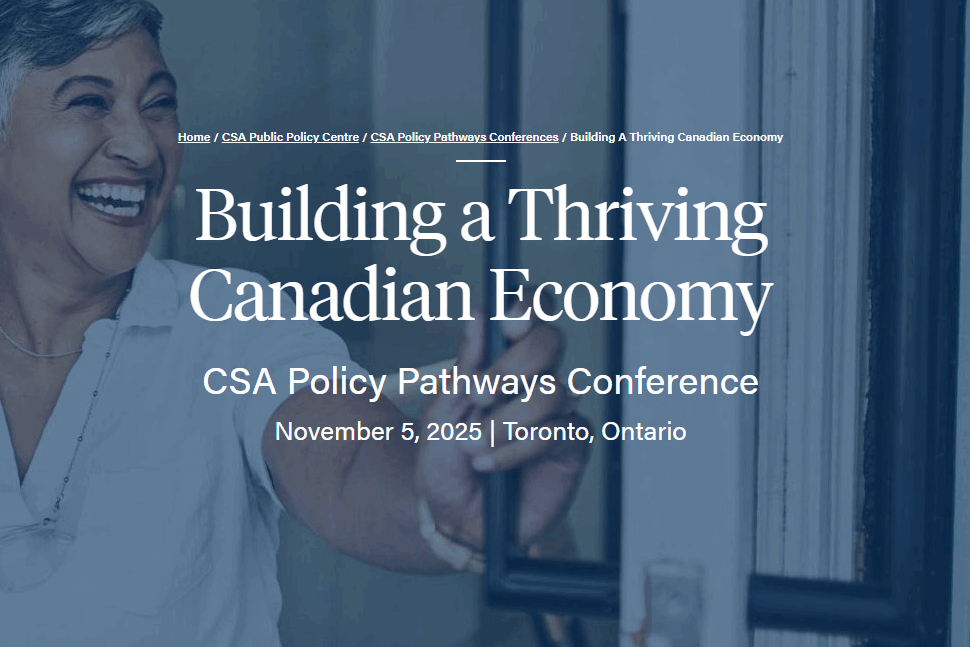By Matthew Mendelsohn | Part of our Special Series: Always Canada. Never 51.
It is now obvious that the United States under Donald Trump has changed in ways that threaten our economic well-being.
Canadians get this. Many Canadians and institutions are supporting local businesses and producers. But buying Canadian is not enough. We also need to be investing Canadian.
Every institution that holds capital, power and influence should invest in Canada’s long-term resilience, growth and sovereignty. This means investing in Canadian businesses and projects, and investing for social, environmental or local impact.

Foundations in Canada, both private and community, hold upwards of $140 billion dollars in their endowments. Endowments held by our universities, colleges, hospitals and other public-purpose institutions, including our philanthropic foundations and those who manage our donor advised funds, need to reorient their investment practices to meet this moment. For these anchor institutions in our communities, investing in long-term resilience is not just about doing their part—it is core to the success of their missions.
There are historic reasons why many holders of capital don’t invest much in Canada, and reasons why the impact-investing movement has not had the transformative impact that many hoped for.
Many investment managers and advisors to foundations claim that they do not want to be over-exposed to the Canadian market to ensure balance, returns and the preservation of their capital. They have acted as a “prudent person” would, seeking strong, risk-adjusted returns so that they can continue their grant making.
It is also true that it has historically been difficult to find sizeable investments that deliver social impact. When Social Capital Partners started impact investing more than 20 years ago, there was little infrastructure to support investors who wanted to generate returns while also delivering positive social, environmental or local impact. There was also not a pipeline of investments.
But this has now changed. Today, there are many investment vehicles, funds and managers of all kinds who know how to invest for impact in Canada. We now have an infrastructure to support investments across asset classes that can deliver social or environmental impact. The federal government’s $755-million investment in the Social Finance Fund has also supported the maturation of this ecosystem.
Foundations need to target transformative impact now, as the communities they serve are under threat. The boards of foundations should mandate that their investment managers find impact-oriented investments and start the transition right away, and if they can’t or won’t hit targets to move their investments towards impact within three years, they should be replaced with those who have the expertise to do so.
Most of the philanthropic capital in Canada today is invested in a variety of asset classes, with the goal of achieving risk-adjusted rates of return, but not impact. If American equities like Tesla or Meta provide better returns than affordable housing or Canadian medium-sized tech companies, well then, that’s where investments have been going.
Foundations need to target transformative impact now, as the communities they serve are under threat.
However, unlike 20 years ago, investment managers today can find investments at scale that deliver positive social and environmental impact across asset classes, including public markets, private markets, debt, affordable housing and infrastructure. Investment managers such as Rally Assets, TwinRiver Capital and Clear Skies Investment Management, among others, have experience managing large investments and delivering returns across multiple bottom lines.
There is room to grow the range and scale of impact investment opportunities; holders of philanthropic capital can and should push for more. They need to use their power to shape the investment market and communicate that we need to catch up to new geopolitical realities. If foundations insist on impact, investment managers will find suitable investments that support Canadians, our communities and our businesses. Although many foundations have carve-outs that they use to invest in Canada or for impact, those need to be bigger.
Foundations should also devote some portion of their investment capital to smaller initiatives, with an aim to grow them. Investment funds for local businesses like Nova Scotia’s Community Economic Development Investment Fund (CEDIF) model should be scaled across the country, and endowments can use these kinds of fund structures to invest in their local business and social-enterprise ecosystem.
Canadian foundations should insist that their investment managers:
- diversify globally by decreasing exposure to the U.S.,
- actively seek Canadian opportunities, and
- invest for impact across asset classes in ways that contribute to economic resilience and community well-being.
Governments should support this shift. Government can be explicit in clarifying that fiduciary responsibility entails making investments that bolster the long-term resiliency of the Canadian economy. They should also say they will tax the investment earnings from endowments if those investments are not focused on impact within three years, which gives foundations and investment managers time to transition. These changes will shift incentives and shape investment markets towards building Canadian wealth, sovereignty and economic growth.
Foundations can use their power to accelerate the maturation of Canada’s impact-investing market in ways that support our economic resilience, growth and sovereignty, while delivering financial returns sufficient to ensure their sustainability. Doing so is prudent in the broadest sense of the word. Investing in companies that undermine the goals of the foundation or our democratic institutions is not prudent in any sense of the word.
Canada’s economy is being attacked, and our foundations sit on huge pools of capital. They need to do more to support Canadian communities at this time of geopolitical and economic threat.
Share with a friend
Related reading
Creativity could be collateral damage of U.S. film tariff
When U.S. tariffs threaten to strike creativity and culture, we can't afford to stay quiet. SCP Fellow and POV executive director Biju Pappachan explores the implications of the U.S. imposing a tariff on foreign-made films and explains why this is the moment for Canada to stand up for its filmmakers, crews and cultural sovereignty. Film and television are not luxuries; cultural production is a strategic sector that delivers exports, jobs and soft power. Just as we negotiate for agricultural or industrial tariff exemptions, cultural production deserves equal protection.
Hype or help? Can crypto and stablecoins solve economic inequality?
Some cryptocurrency advocates are promoting the use of stablecoins as a common currency, arguing that this new currency could help the cost-of-living crisis and promote economic equality – particularly for young people. Law professor, money expert and SCP Fellow Dan Rohde is not convinced that crypto can help address economic inequality. In this explainer, he breaks down what stablecoins are and aren’t, and how to think critically about their promises.
Building a thriving economy: CSA Policy Pathways Conference
The CSA Policy Pathways Conference convenes leaders, thinkers and changemakers across government, business, community and academia to confront the pressing questions shaping our economic future. How can we build resilience in the face of global uncertainty? What will it take to unlock innovation and ensure its benefits are broadly shared? How do we design policies that promote competition, inclusion, and financial security? Join us on November 5, 2025, in Toronto, as we explore how we can take bolder steps toward a more resilient, innovative and equitable economic future.


